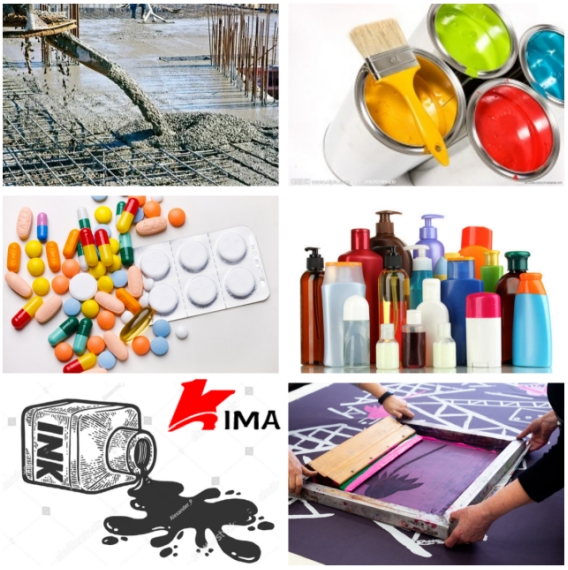Hydroxypropyl Methylcellulose (HPMC) is a non-ionic cellulose ether widely used in construction, medicine, food, cosmetics, coatings, daily chemicals and other fields. Due to its good water solubility, colloidal properties, film-forming properties, thickening, suspension and water retention, it plays an important role in various industries.
1. Construction industry
The construction field is one of the largest application markets for HPMC. HPMC is commonly used in cement mortar, adhesives, tile adhesives, exterior wall insulation systems, putty powder and gypsum-based materials, and mainly plays the following roles:
Thickening and water retention: Enhance mortar consistency, improve construction performance, prevent premature evaporation of water, and improve adhesion.
Delaying solidification time: Allow workers to have longer construction time and improve project quality.
Improving fluidity: Helps materials to spread evenly on walls or base surfaces and improve construction efficiency.

2. Pharmaceutical Industry
HPMC is an important excipient in the pharmaceutical industry, mainly used as:
Sustained-release carrier: HPMC can be used to prepare sustained-release tablets to slowly release drugs and prolong the duration of action.
Capsule shell material: It can be used in plant capsules to replace gelatin, suitable for vegetarians and religious taboo groups.
Thickener and suspending agent: Improve the viscosity and stability of products in oral liquids, eye drops, ointments and other medicines.
Film-forming agent: Form a coating in tablets to mask the taste of the drug and control the release rate.
3. Food industry
In the food industry, HPMC, as a food additive, is a cellulose derivative with higher safety and is widely used in:
Food thickener: Improve the taste and texture of food, such as in dairy products, jellies, and sauces.
Emulsifier and suspending agent: Maintain uniform distribution of fat or solid particles in food.
Low-fat food substitute: Used as a fat substitute in low-calorie foods.
Plant meat products: Provide a meat-like taste and structure to enhance simulation.
4. Cosmetics and personal care products
HPMC also has a place in the cosmetics field. It is often used in skin creams, facial cleansers, shampoos, toothpastes and other products. It plays the following roles:
Thickening effect: making the product easier to apply and less likely to flow.
Emulsifying and stabilizing effect: keeping the product ingredients stable and preventing stratification or precipitation.
Moisturizing ingredient: can form a thin film on the skin surface, reduce water evaporation, and increase lubrication.
Transparent gel carrier: commonly used in transparent products such as eye gel and facial masks.

5. Paints and varnishes
In the paint industry, HPMC is a commonly used thickener and rheology control agent. It can be used in latex paints, wall paints, etc. Its main functions include:
Improving fluidity and construction properties: improving the operating performance of paints when brushing or rolling.
Preventing pigment sedimentation: keeping the pigment evenly distributed during storage.
Good film-forming property: helps the paint form a uniform and smooth surface after drying.
6. Other uses
HPMC is also used in the papermaking industry (as a surface sizing agent), the ceramic industry (as a molding aid), the textile industry (as a sizing agent), etc. Its non-toxic, environmentally friendly, and biodegradable properties also make it increasingly favored by green material developers.
HPMC has shown extremely high practical value in many industries due to its excellent physical and chemical properties. With the increasing demand for green environmental protection and high-performance materials, the application prospects of HPMC will be broader. Its versatility makes it not only an important auxiliary material for traditional industries, but also expanding into emerging fields such as biomedicine and environmentally friendly new materials.
 English
English 日本語
日本語 français
français Deutsch
Deutsch Español
Español italiano
italiano русский
русский português
português العربية
العربية Türkçe
Türkçe Nederland
Nederland





